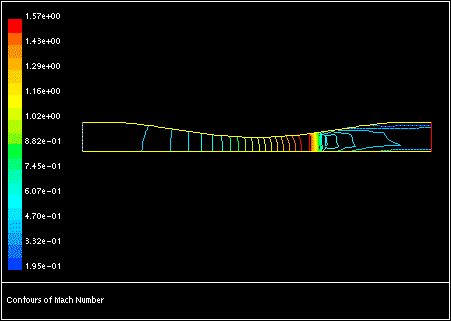Compressibility effects are encountered in gas flows at high
velocity and/or in which there are large pressure variations. When
the flow velocity approaches or exceeds the speed of sound of the
gas or when the pressure change in the system () is large, the variation
of the gas density with pressure has a significant impact on the flow
velocity, pressure, and temperature. Compressible flows create a unique
set of flow physics for which you must be aware of the special input
requirements and solution techniques described in this section. Figure 1.7: Transonic Flow in a Converging-Diverging Nozzle and Figure 1.8: Mach 0.675 Flow Over a Bump in a 2D Channel show examples of compressible
flows computed using Ansys Fluent.
For more information about setting up compressible flows in Ansys Fluent, see Compressible Flows in the User's Guide.
Information about compressible flows is provided in the following subsections:




